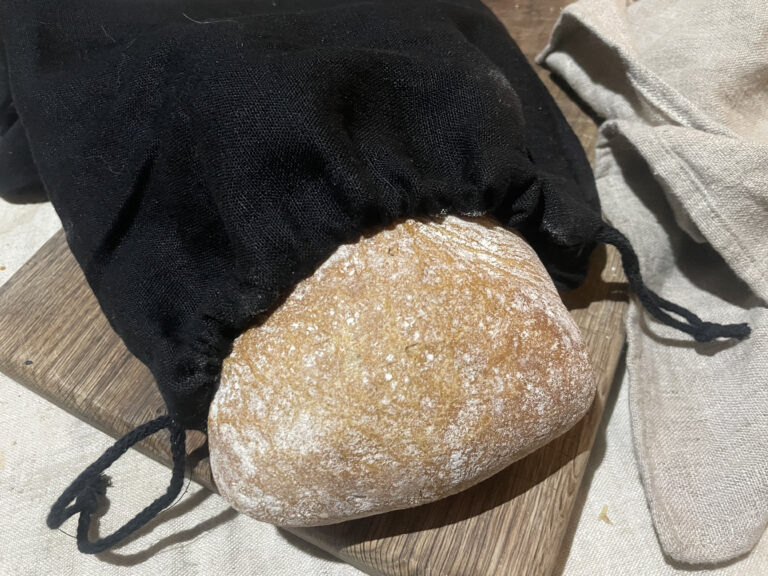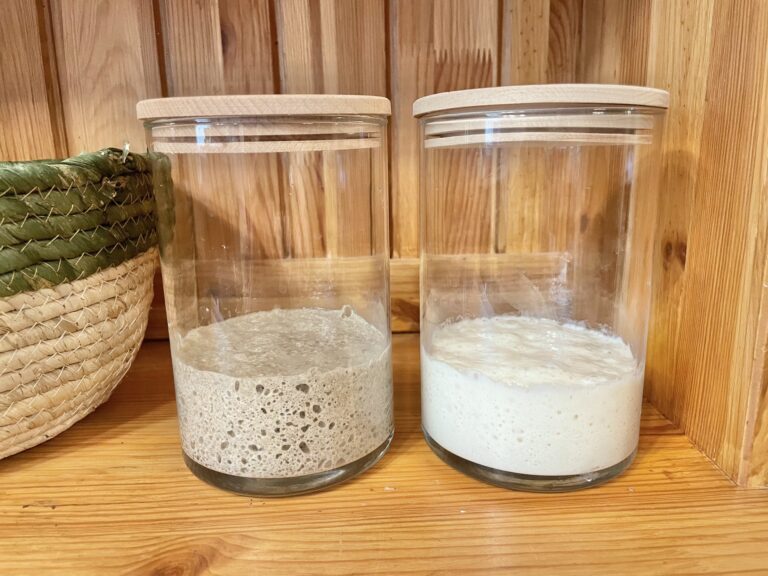I enjoy using reusable items in my everyday household activities. I’m not a hardcore environmentalist or some kind of climate activist, but it’s still nice to be able to reduce my impact on the environment in my daily routines. The main reason I use reusable cleaning wipes, however, is convenience! It might seem more convenient to use paper towels since you have to wash and dry all those wipes, but in my opinion, paper towels are much more cumbersome. Even reusable cloth diapers have come to my rescue countless times, whether it’s for cleaning the floor or dealing with spills. In such situations, using paper can be very annoying because you go through half a roll at once…

Before starting, come and follow me on Instagram, Facebook, and Pinterest!
Why I prefer reusable cleaning wipes
There are different types of wipes: there are paper towels, and there are also reusable table cleaning wipes that you can use for a certain period, and when they get dirty, you throw them away. I don’t like either of these options. Paper towels are used in the kitchen in endless quantities, and “regular” table cleaning wipes quickly become smelly and collect bacteria from the very first day of use. With a reusable cloth cleaning wipe, you can clean a large surface area, and you can wash it under the tap if necessary and then continue using it. To clean the same amount of kitchen surfaces with paper towels, you would need a lot more, and before I started using reusable wipes, my kitchen’s main problem was that we were constantly running out of paper towels!
Additionally, these cleaning wipes can be used for many other purposes. It’s hard to list all the uses, but for example, they are great for wiping kid’s fingers and mouths after eating. I have also used them as a “filter” when I need to strain something very fine. When making sourdough bread, I use these wipes while dough is proofing. And when warm bread or pies come out of the oven, it’s very convenient to throw a damp cloth wipe over them. In fact, there are numerous ways to use homemade cleaning wipes, and you keep discovering how convenient they are for various tasks.
How to wash reusable cleaning wipes
Washing cleaning wipes is easy. I wash them together with regular laundry; there’s no need for a separate load just for wipes. They hardly take up any extra space in the washing machine since they are small and thin, so they “disappear” among the rest of the laundry. Cleaning wipes always come out clean, and there are no issues, even if a wipe has become very greasy. However, since cleaning wipes are usually damp when placed in the laundry hamper, you shouldn’t delay doing the laundry for “several weeks”. Otherwise, the wipes might develop mold and could also ruin some of your other clothes.

What you need to make cleaning wipes
- Sewing machine or serger/overlocker – With a sewing machine, you should be able to do at least a zigzag stitch, but it’s even better if your machine can create a stitch similar to an overlock. A serger/overlocker is the best option, but not everyone has one at home, and that’s perfectly fine. A regular sewing machine will do the job; it just leaves a slightly fuzzier edge compared to an overlock.
- Cotton or linen fabric – These natural fabrics absorb liquid the best. Fabric is typically sold in stores at a width of 150cm. With this width, one meter of fabric should be enough, and you can easily cut out a sufficient number of properly sized wipes.
- Scissors
- Thread – Ideally, it should match the color of the fabric. You’ll need a fair amount of thread – for 30 wipes, I recommend having at least 150 meters to ensure you won’t have to go back to the store for more.
- Measuring tape
- Small storage container – You’ll need somewhere to store the wipes, and a small shoebox-sized container is an excellent solution.
How to make cloth cleaning wipes
Making cleaning wipes is one of the simplest sewing projects, and anyone who knows how to operate a sewing machine can definitely handle it. I highly encourage making the wipes yourself, but for those who lack the motivation, you can easily find reusable cleaning wipes in eco-friendly stores.
For an average household, about 30 cleaning wipes should be enough. This ensures that you rarely run out of wipes but also that you don’t have too many – in my opinion, it’s just the right amount! The size of one cleaning wipe should be approximately between 15cm x 15cm and 20cm x 20cm. This size allows you to store the wipes neatly on a kitchen cabinet without taking up too much space.
Sewing cleaning wipes
Here, you don’t need much instruction.
- Cut out the number of wipes that suits your needs, preferably in sizes ranging from 15cm x 15cm to 20cm x 20cm, around 30 pieces.
- Thread your sewing machine and choose either a zigzag stitch or a stitch that resembles an overlock. For Brother machines, I recommend using stitch number 3 or SS23. The stitch width should be between 4-6; choose what you prefer, a wider or narrower stitch.
- Then sew all four edges with the selected stitch. For serger/overlock machines, the process is the same.
- So go ahead and put those cleaning wipes to good use!

Ideas and Tips
- Don’t make wipes larger than 20cm x 20cm. They take up unnecessary space, and in reality, a wipe this size doesn’t offer any extra advantages. If you need to clean more, wash a small wipe in between or use multiple wipes.
- Don’t try to make hemmed edges on the wipes just for the sake of making them look “nicer.” Hemming the edges takes much more time, and in this case, the result isn’t worth it.


Homemade cleaning wipes
Homemade reusable cleaning wipes are a truly convenient way to clean up the kitchen! Plus, they have other benefits and uses as well.
Materials
- Cotton or linen fabric - These natural fabrics absorb liquid the best. Fabric is typically sold in stores at a width of 150cm. With this width, one meter of fabric should be enough, and you can easily cut out a sufficient number of properly sized wipes.
- Thread - Ideally, it should match the color of the fabric. You'll need a fair amount of thread - for 30 wipes, I recommend having at least 150 meters to ensure you won't have to go back to the store for more.
- Small storage container - You'll need somewhere to store the wipes, and a small shoebox-sized container is an excellent solution.
Tools
- Sewing machine or serger/overlocker - With a sewing machine, you should be able to do at least a zigzag stitch, but it's even better if your machine can create a stitch similar to an overlock. A serger/overlocker is the best option, but not everyone has one at home, and that's perfectly fine. A regular sewing machine will do the job; it just leaves a slightly fuzzier edge compared to an overlock.
- Scissors
- Measuring tape
Instructions
- Cut out the number of wipes that suits your needs, preferably in sizes ranging from 15cm x 15cm to 20cm x 20cm, around 30 pieces.
- Thread your sewing machine and choose either a zigzag stitch or a stitch that resembles an overlock. For Brother machines, I recommend using stitch number 3 or SS23. The stitch width should be between 4-6; choose what you prefer, a wider or narrower stitch.
- Then sew all four edges with the selected stitch. For serger/overlock machines, the process is the same.
- So go ahead and put those cleaning wipes to good use!





